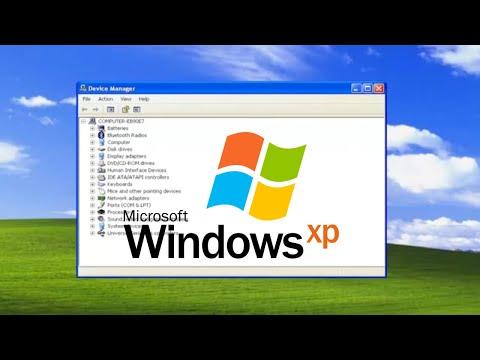When I was working on a project that involved some legacy software, I found myself needing to access the Device Manager on an old Windows XP machine. While Windows XP is quite outdated compared to the latest versions of Windows, it’s still important for dealing with older hardware or software. If you ever find yourself in a similar situation, here’s how I managed to access the Device Manager on Windows XP.First, I made sure that I was logged into the computer with administrative privileges. This is crucial because the Device Manager requires administrative rights to make changes to hardware settings. If you’re not logged in as an administrator, you won’t be able to access all the features of the Device Manager.To start the process, I clicked on the “Start” button located at the bottom-left corner of the screen. This opens the Start menu, which is the gateway to various system tools and settings in Windows XP. From here, I navigated to the “Control Panel.” I found the Control Panel listed in the Start menu and clicked on it.Once the Control Panel was open, I was presented with a range of icons representing different system settings and tools. Since the Device Manager is not immediately visible, I had to look for it within the Control Panel. I found the option labeled “Performance and Maintenance” and clicked on it.In the Performance and Maintenance window, there was an additional set of options. I looked for and clicked on the “System” icon. This action opened the System Properties window. In the System Properties window, there are several tabs, and I needed to navigate to the “Hardware” tab.Under the “Hardware” tab, I found a button labeled “Device Manager.” Clicking this button launched the Device Manager. The Device Manager is a utility that displays all the hardware components installed on the computer and allows you to manage their drivers and settings.In the Device Manager window, I saw a list of categories representing the different types of hardware installed on the machine, such as disk drives, display adapters, and network adapters. Each category can be expanded to show individual devices. If there was a problem with any of the hardware, it would be indicated by a yellow exclamation mark next to the device.Navigating through the Device Manager, I could update drivers, disable or enable devices, and view detailed information about each piece of hardware. If I needed to troubleshoot a hardware issue, the Device Manager was the place to start. For example, if a device wasn’t working properly, I could check for driver issues, reinstall the drivers, or see if there were any conflicts with other hardware.Throughout this process, I found it helpful to refer to online resources or the help documentation if I encountered any unfamiliar settings or issues. Although Windows XP is an older operating system, its basic functions like accessing the Device Manager remain crucial for maintaining and troubleshooting older hardware.I also made sure to check for any updates or patches that might be available for Windows XP. Even though Microsoft no longer supports Windows XP with updates or security patches, some third-party vendors still offer tools and updates for legacy systems. This step helped ensure that my system was running as smoothly as possible, given its age.Overall, accessing the Device Manager on Windows XP involved navigating through several layers of menus, but it was straightforward once I knew the steps. If you ever need to perform similar tasks on Windows XP, remember these steps: start from the Start menu, go to the Control Panel, then to Performance and Maintenance, followed by System, and finally click on Device Manager under the Hardware tab. This sequence will get you to the Device Manager, where you can manage and troubleshoot your hardware.Although Windows XP is no longer a common operating system in today’s world, knowing how to access and use the Device Manager can still be useful, especially when dealing with legacy systems or maintaining older hardware. Understanding these basic procedures ensures that you can handle various hardware-related issues efficiently, even on an older platform.
How to Get To Device Manager in Windows XP [Tutorial]
